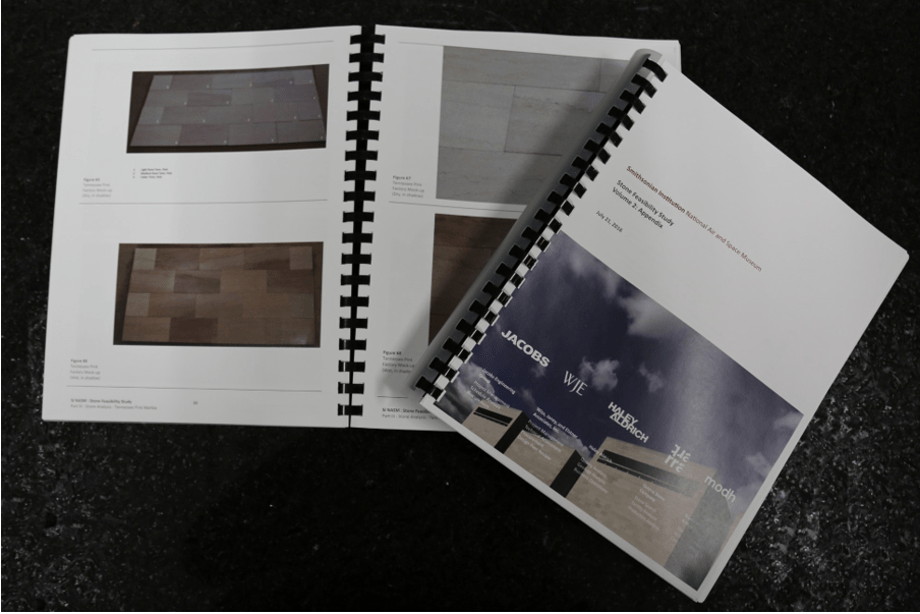Smithsonian’s National Air and Space Museum
Location: Washington, D. C.
Role: Stone Consultant
Client: Smithsonian Institute
Design: Quinn Evans Architects & Studio Modh
Engineering: Jacobs Engineering Group
Testing: Wiss, Janney, Elstner Associates
Quarra Stone was commissioned by the Smithsonian Institute to oversee the meticulous process of selecting a new stone cladding to replace the existing marble on a prestigious building situated on the National Mall. Working alongside a team of engineers and experts from the construction, testing, façade, and mining industries, we conducted thorough evaluations to assist the Owner and Architect of Record in making an informed decision regarding the replacement of approximately 200,000 square feet of façade on this nearly sixty-year-old structure.
Our responsibilities encompassed leading a comprehensive nationwide assessment of potential stones and stone sources capable of meeting the project’s performance, aesthetic, and fabrication requirements. To aid in the decision-making process, we presented a catalog of eighty stones that had undergone thorough research and evaluation.
Throughout the project, we devised and implemented a meticulously designed workflow to guide the team towards optimal solutions. We personally visited and assessed six final quarry and fabrication operations, examining their capabilities and viability as resources. Additionally, we conducted interviews with vendors to gauge their suitability for the project. By reviewing both historic and recent projects as exemplars, we analyzed weathering patterns and other visible indicators of performance.
Successful Collaboration: A Comprehensive Approach to Stone Selection and Decision-making for Project Owner Consideration
Reporting, teaching sessions, and mockups were integral components of our collaboration with the project team, which consisted of 25 members including architects, Smithsonian staff, and consultants. We conducted extensive testing and provided comprehensive test reports and interpretations to the owner. Furthermore, we developed a detailed Request for Information (RFI) to evaluate the capabilities of quarries and companies, considering their previous installation track records and ability to meet the project’s aesthetic criteria. The responses to the RFI were evaluated, and we meticulously priced all available options, including their cost and timeframe on the critical path.
To aid in decision-making, we created a Feasibility Matrix that ranked various performance standards, costs, and short- and long-term lifespan considerations for each stone option. Finally, we produced two comprehensive reports encompassing all research materials and recommendations generated by the team, which were presented to the owner for consideration.


